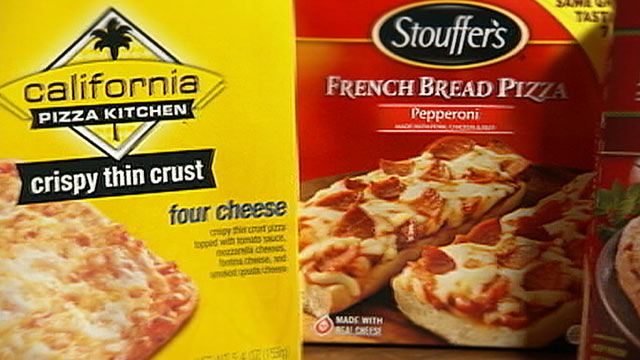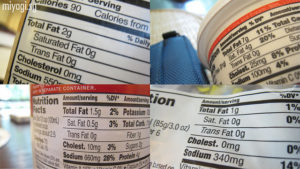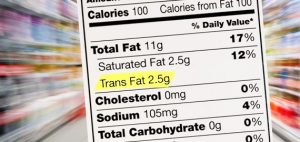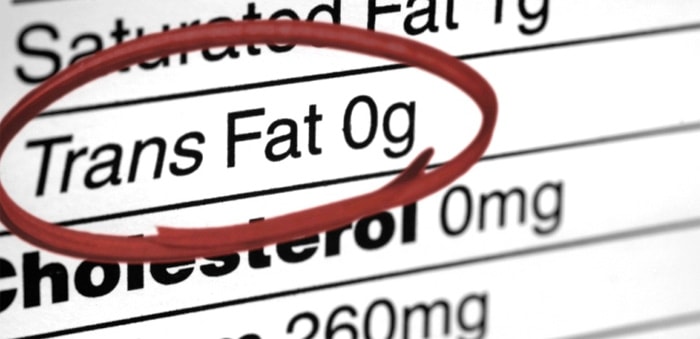41 trans fat names on labels
New Trans-fat Labels - Dr. McDougall The federal government formally announced that food labels will be required to disclose the amount of unhealthy trans-fatty acids they contain by January 1, 2006. This means another 60,000 Americans will be at increased risk of dying prematurely before this information is available.1 You don't have to be one of these victims of ignorance ... Consumer Updates | FDA The site is secure. The https:// ensures that you are connecting to the official website and that any information you provide is encrypted and transmitted securely.
Clues on labels reveal hidden trans fats - SFGATE Clues on labels reveal hidden trans fats. Kim Severson , Chronicle Staff Writer. July 31, 2002. When government researchers earlier this month said no amount of trans fat was safe to eat ...

Trans fat names on labels
Dietary fats explained: MedlinePlus Medical Encyclopedia 13.07.2020 · Trans fatty acids are unhealthy fats that form when vegetable oil goes through a process called hydrogenation. This leads the fat to harden and become solid at room temperature. Hydrogenated fats, or "trans fats," are often used to keep some foods fresh for a long time. Trans fats are also used for cooking in some restaurants. They can raise ... 7 Foods That Still Contain Trans Fats - Healthline Some foods may still contain trans fats, either as a result of being produced before the FDA ban took effect or because their production methods leave small amounts of these compounds in the foods ... Facts about trans fats: MedlinePlus Medical Encyclopedia 26.05.2020 · Trans fat is a type of dietary fat. Of all the fats, trans fat is the worst for your health. Too much trans fat in your diet increases your risk for heart disease and other health problems. Trans fats are made when food makers turn liquid oils into solid fats, like shortening or margarine. Trans fats can be found in many fried, "fast" packaged ...
Trans fat names on labels. Reporting of trans-fat on labels of Brazilian food products Objective: The present study investigated how trans-fat is reported on the packaging of foods sold in a Brazilian supermarket. Design: The present descriptive, cross-sectional study analysed the ingredient list, nutrition facts label and claims of no trans-fat on the packaging. Setting: A large supermarket in Florianópolis, Brazil. FDA Trans Fat Labeling: What You Need to Know - LabelCalc According to the FDA, trans fats should appear as "Trans fat" or "Trans" on the nutrition facts panel on a separate line located directly underneath "Saturated fat.". Values for trans fats must appear in grams per serving. If the value for your product is under 5 grams per serving, then you must round it to the nearest 0.5 gram. Trans Fats - What are Trans Fats, Trans Fat Dangers, Foods ... - Diabetes Dangers of trans fats. Trans fats are known to raise cholesterol and therefore increase the chances of: Developing heart disease. Strokes. Liver dysfunction. Type 2 diabetes. Alzheimers. Trans fats have also been shown to be linked with infertility in women. Trans fatty acids not only raise the bad LDL cholesterol, they also reduce the healthy ... Trans Fat on Food Labels: Now You See It, Now You Don't The latest US Food and Drug Administration (FDA) rules allow manufacturers to list "0 trans fats" on the labels of foods that have less than 0.5 grams (g) of trans fats per serving. Because official serving sizes are often unrealistically small, it would be easy to consume several servings a day of products that have less than 0.5 g of trans ...
What Are Trans Fats? Food Sources, Decoding Labels - WebMD Check the Nutrition Facts label and the ingredient list. If the Nutrition Facts label says the product has "0 g trans fat," that doesn't necessarily mean it has no trans fats. It could have up to ... How to Spot Sneaky Forms of Trans Fats on Labels You must read every ingredient on the label, searching for the words "hydrogenated" or "partially hydrogenated.". One tablespoon of margarine (stick form) contains 3 grams of trans-fats. A medium order of French Fries contains 8 grams of trans-fats when cooked in partially hydrogenated oil. You can see how this adds up. Trans-fats and what to check on labels | Food Safety Genie Manufacturers label trans-fats on their names as "edible vegetable fat", "Partially hydrogenated vegetable oil" "vegetable shortening or, "margarine" etc. According to the FSSAI, if the food, which uses hydrogenated vegetable fats, must declare on the label "contains trans-fats". Other means of identifying if a product ... › understanding-food-labelsUnderstanding food labels - Canada.ca Find information on food labels and how to understand them. Learn about nutrition facts tables, serving size, list of ingredients, % daily value and nutrition claims.
en.wikipedia.org › wiki › FatFat - Wikipedia The most common type of fat, in human diet and most living beings, is a triglyceride, an ester of the triple alcohol glycerol H(–CHOH–) 3 H and three fatty acids. The molecule of a triglyceride can be described as resulting from a condensation reaction (specifically, esterification) between each of glycerol's –OH groups and the HO– part of the carboxyl group HO(O=)C− of each fatty ... › hometown-healthProcessed foods: What you should know - Mayo Clinic Health System Mar 21, 2022 · Eating processed foods on occasion is fine. However, look for hidden sugar, fat and salt, especially those added during processing. Most Nutrition Facts labels now include added sugars. Dietary Guidelines for Americans recommends getting less than 10% of total calories from added sugars. Learn to spot words like "maltose," "brown sugar," "corn ... Trans fat information on food labels: consumer use and interpretation Men and consumers under age 40 were least likely to be aware of food label information. While most consumers (75%) correctly interpreted the "0 trans fat" nutrition claim and thought foods with this claim could be healthy choices (64%), only 51% purchased these foods to reduce trans fat intake. Conclusions: Nutrition professionals should target ... Food Labels: Fat & Cholesterol | Home & Garden Information Center The 2015 Dietary Guidelines for Americans recommends the following intakes of fat and cholesterol every day: total fat—20 to 35% of calories, depending on age and gender (65 grams for the 2,000-calorie intake level used in the Daily Value)*. saturated fat—less than 10% of calories**. trans fat— keep as low as possible.
Trans Fats: How To Read Nutritional Facts Labels - YouTube Trans Fats: Nutritional Food Labels are not always honest about what is in your food. The hidden Dangers of dietary fats that can hurt you. Our food has a lo...
Trans Fats | American Heart Association Many restaurants and fast-food outlets use trans fats to deep-fry foods because oils with trans fats can be used many times in commercial fryers. Several countries (e.g., Denmark, Switzerland, and Canada) and jurisdictions (California, New York City, Baltimore, and Montgomery County, MD) have reduced or restricted the use of trans fats in food ...
Consumers beware: Misleading labels may hide trans fats People may be consuming more trans fat than they think, as a result of misleading food labels, according to a study from the New York Department of Health and Mental Hygiene. Researchers examined ...
Trans Fats: The Truth in Labeling | Atkins After 2006, when the new labeling laws go into effect, the FDA will still allow manufactucturers to list "zero" under trans fats if there is less than ½ gram per serving of the food. They will also permit manufacturers to say "zero trans fats" on the label if a serving size contains a half gram or less. This is a bad rule that needs ...
Understanding food labels - Canada.ca Food labels, nutrition facts tables, serving size, ingredients, % daily value, nutrition claims. Services and information. Nutrition facts tables. How to use, what is in them, foods that don't have a nutrition facts table. Serving size. How to use the serving size on nutrition facts tables. List of ingredients. About list of ingredients on packaged foods, common terms used for some …
Trans fat - Wikipedia Trans fat, also called trans-unsaturated fatty acids, or trans fatty acids, is a type of unsaturated fat that naturally occurs in small amounts in meat and milk fat. It became widely produced as an unintentional byproduct in the industrial processing of vegetable and fish oils in the early 20th century for use in margarine and later also in snack food, packaged baked goods, and for …
Hidden Trans Fats In Food | Prevention The FDA plans to require manufacturers to list the amount on food labels, but you may not see the term "trans fat" listed anywhere on the label. For many products, the only way to tell if a food ...
Trans Fat | FDA Trans fat also occurs naturally in food products from ruminant animals (e.g., milk, butter, cheese, meat products, etc.). Eating trans fat raises the level of LDL ("bad") cholesterol in the blood.
Food Label Ingredients: How to Look for MSG, Trans Fat, and more A food that promises to be trans fat free may in fact contain up to 0.5 grams of partially hydrogenated oils, a source of trans fats, in the ingredient list. "Ingredient lists are a good way to ...
Nutrition: Trans fat - World Health Organization Trans fat, or trans-fatty acids, are unsaturated fatty acids that come from either natural or industrial sources. Naturally-occurring trans fat come from ruminants (cows and sheep). Industrially-produced trans fat are formed in an industrial process that adds hydrogen to vegetable oil converting the liquid into a solid, resulting in ...
Food label: ingredient list - Canada.ca Food labels; Understanding food labels; Food label: ingredient list . The ingredient list shows all the ingredients in a packaged food. Ingredients are listed in order of weight, beginning with the ingredient that weighs the most and ending with the ingredient that weighs the least. This means that a food contains more of the ingredients found at the beginning of the list, and less of the ...
How to Understand and Use the Nutrition Facts Label | FDA 25.02.2022 · Note: some nutrients on the Nutrition Facts label, like total sugars and trans fat, do not have a %DV – they will be discussed later. General Guide to …
Fat - Wikipedia In nutrition, biology, and chemistry, fat usually means any ester of fatty acids, or a mixture of such compounds, most commonly those that occur in living beings or in food.. The term often refers specifically to triglycerides (triple esters of glycerol), that are the main components of vegetable oils and of fatty tissue in animals; or, even more narrowly, to triglycerides that are solid or ...

Nestle Facing $5 Million Lawsuit Over Trans Fat in Frozen Pizzas Sold by DiGiorno, Stouffer's ...
› en › healthy-livingUnderstanding Ingredients on Food Labels | American Heart ... Mar 06, 2017 · But when it comes to sodium, added sugars and saturated and trans fats – which in excess can damage your heart health and increase your risk of heart disease and stroke – it can be difficult to tell just how much is in there. The reason is, these ingredients can go by several names. There are many terms used for sugar on food labels.
How to Read Fats & Oils Food Labels A Note on Ingredient Lists. Fats and oils can come from many sources, like animal fats, fish, seeds, plants, and nuts. Reading the ingredient lists on products will reveal the source of the fat. For oils and fats ingredient lists, fats and oils are referred to by their common names (e.g., "beef fat," "cottonseed oil").
medlineplus.gov › ency › patientinstructionsDietary fats explained: MedlinePlus Medical Encyclopedia Jul 13, 2020 · Trans fatty acids are unhealthy fats that form when vegetable oil goes through a process called hydrogenation. This leads the fat to harden and become solid at room temperature. Hydrogenated fats, or "trans fats," are often used to keep some foods fresh for a long time. Trans fats are also used for cooking in some restaurants.
medlineplus.gov › ency › patientinstructionsFacts about trans fats: MedlinePlus Medical Encyclopedia May 26, 2020 · Look closely at the amount of trans fat in a serving. Look for the words "partially hydrogenated" in the ingredient list. It means oils have been turned to solids and trans fats. Manufacturers can show 0 grams of trans fat if there are less than 5 grams per serving; often a small serving size shows 0 grams of trans fat, but it still might be in ...














Post a Comment for "41 trans fat names on labels"